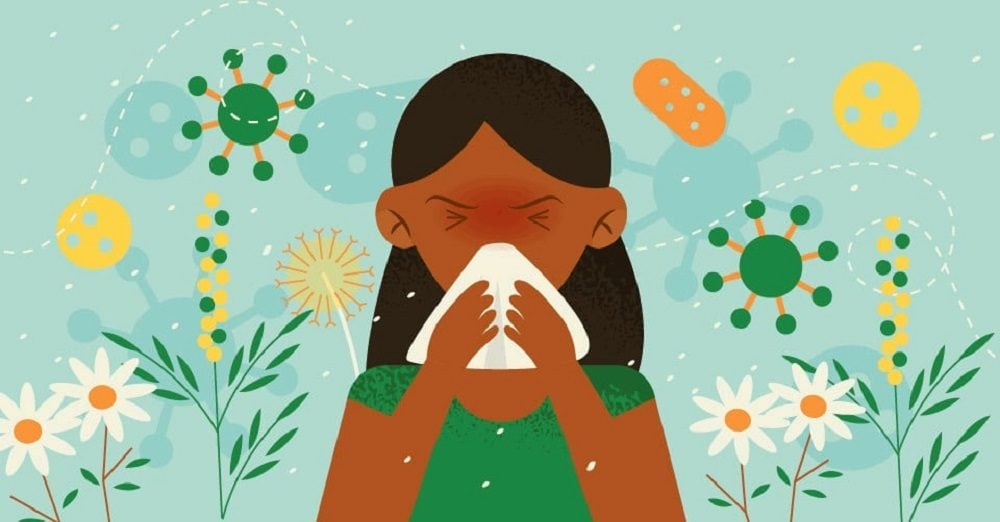
How to Handle Hay Fever

While many people look forward to the arrival of Spring, if you are one of the one in five people who suffer from hayfever, this may be your least favorite time of year.
Hayfever is a frequent term for allergic rhinitis, an allergy affecting the nose and/or eyes. Contact with common environmental allergens, such as pollens, dust mites, molds, and animal hair, causes it. Hayfever can occur at any time of year, although it is more prevalent in the spring when grass pollen levels are highest.
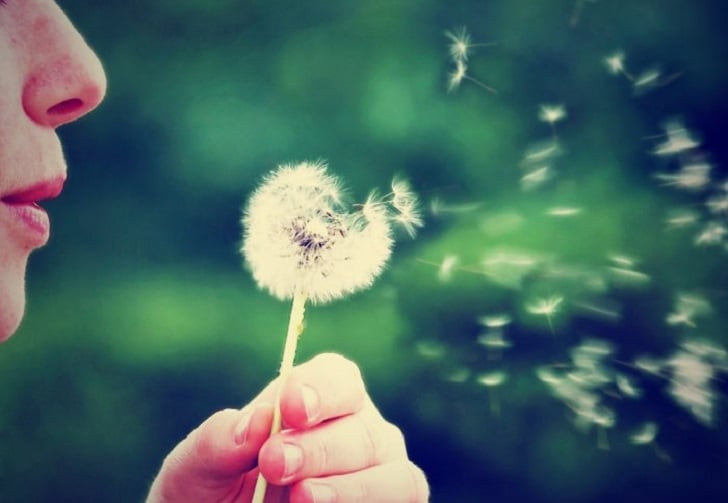
Ryan O’Hare/ Shutterstock | Your health care provider may diagnose hay fever based on a physical exam and your symptoms
Use a Humidifier
A humidifier can help moisten the air in your home, soothe irritated nasal passages, and reduce congestion. However, be careful not to make the air too humid, which can encourage mold growth and other allergens.
Try Acupuncture
Acupuncture is an alternative treatment involving thin needles insertion into specific points on the body. Some people find that acupuncture can help reduce hay fever symptoms by improving respiratory function and reducing inflammation.
Use Essential Oils
Essential oils such as eucalyptus, peppermint, and lavender can help alleviate hay fever symptoms by reducing inflammation and opening up nasal passages. You can use essential oils in a diffuser or add a few drops to a hot bath or shower.
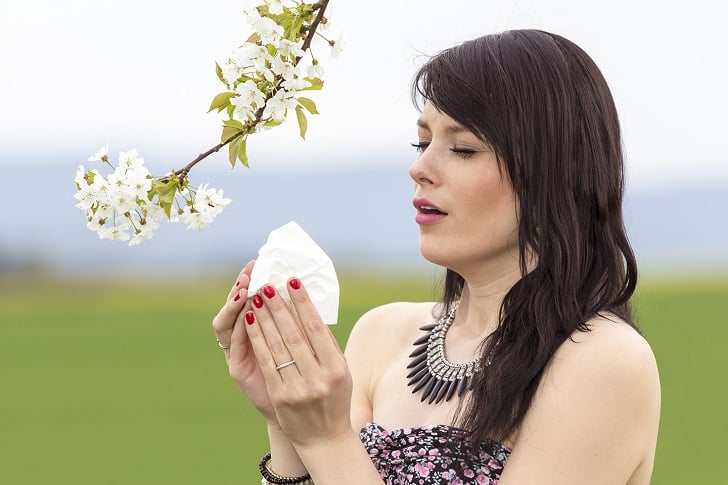
NPS/ iStock | Hay fever is more common in urban areas than in rural areas due to higher levels of pollution
Exercise Indoors
Exercising outdoors during high pollen days can exacerbate hay fever symptoms. Try to exercise indoors, where the air is cleaner, or wait until pollen counts are low before going outside.
Wear Protective Clothing
If you need to be outside during high pollen days, wearing protective clothing can help reduce your exposure to pollen. Wear a hat to protect your hair and face, and wear long-sleeved shirts and pants to cover as much skin as possible. You can also wear a pollen mask to filter out pollen particles.
Take Over-the-Counter Medications
There are several over-the-counter medications available that can help relieve the symptoms of hay fever. Antihistamines can help reduce sneezing, itching, and runny nose, while decongestants can help relieve nasal congestion. Nasal sprays containing corticosteroids can help reduce inflammation in the nasal passages, which can relieve congestion, itching, and sneezing.
It is important to talk to your healthcare provider before starting any new medication, especially if you have other medical conditions or are taking other medications.
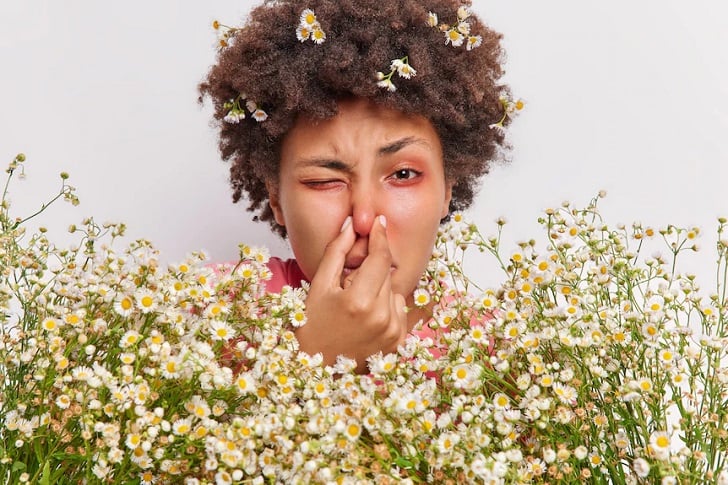
Freepik/ Wayhomestudio | Symptoms of hay fever are most commonly developed in childhood and adolescence
Stay Indoors During High Pollen-Count Days
Pollen counts are highest in the morning and on dry, windy days. Staying indoors during these times can help reduce exposure to pollen and other allergens. Using air conditioning can also help filter out allergens from the air.
Wear a Mask
Wearing a mask when outdoors can help reduce your exposure to pollen and other allergens. A mask with a HEPA filter is most effective at filtering out allergens. It is also important to wash your hands and face after being outdoors to remove any allergens that may have been collected on your skin and clothing.
Consider Immunotherapy
Immunotherapy, also known as allergy shots, is a treatment that involves injecting small amounts of allergens into the body over time, which can help the body build up a tolerance to the allergens and reduce the symptoms of hay fever. Immunotherapy is typically recommended for people with severe hay fever or those who do not respond well to other treatments.
More in Fame
-
`
Dwayne ‘The Rock’ Johnson’s Business Ventures
When you think of Dwayne ‘The Rock’ Johnson, the first thing that may come to mind is his impressive career in...
December 5, 2023 -
`
Sam Bankman-Fried’s Secret Celebrity Network Exposed
In the glitzy world of cryptocurrencies, where fortunes can be made and lost instantly, having connections to the stars can make...
November 29, 2023 -
`
Are Rare Earth Elements Really So Rare?
When we hear the term “rare earth elements,” our minds often conjure up images of elusive and scarce materials. After all,...
November 20, 2023 -
`
Exploring America’s Top Tier Hotels
For those who crave the finer things in life, the United States offers a treasure trove of luxurious hotels that elevate...
November 19, 2023 -
`
Where Does Elon Musk Live? Let’s Find Out!
Elon Musk, the billionaire entrepreneur and visionary behind Tesla and SpaceX, is known for pushing the boundaries of technology and innovation....
November 10, 2023 -
`
The Origin of Elon Musk’s Feud With Bill Gates
In the world of tech titans and billionaire visionaries, it’s not uncommon for rivalries and feuds to develop. One of the...
November 1, 2023 -
`
Wall Street Downgrade VS. Upgrade: Which One Is Better for Your Money?
“Bad news sells.” It is an age-old adage we have all heard before. In the world of finance, the principle often...
October 28, 2023 -
`
Guitar Smashed By Nirvana’s Kurt Cobain Sells for Nearly $600k!
In the world of rock ‘n’ roll, legends are born from the music and the artifacts left behind. One such artifact,...
October 21, 2023 -
`
Dwayne “The Rock” Johnson’s Plastic Surgery Journey
Dwayne Johnson, globally celebrated as “The Rock,” is synonymous with wrestling and Hollywood stardom. With a physique chiseled from relentless workouts...
October 10, 2023



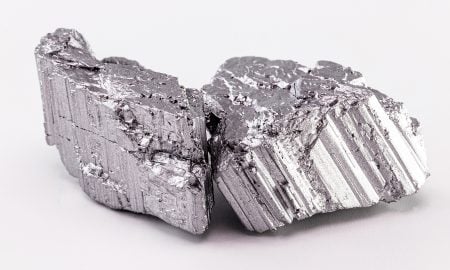











You must be logged in to post a comment Login